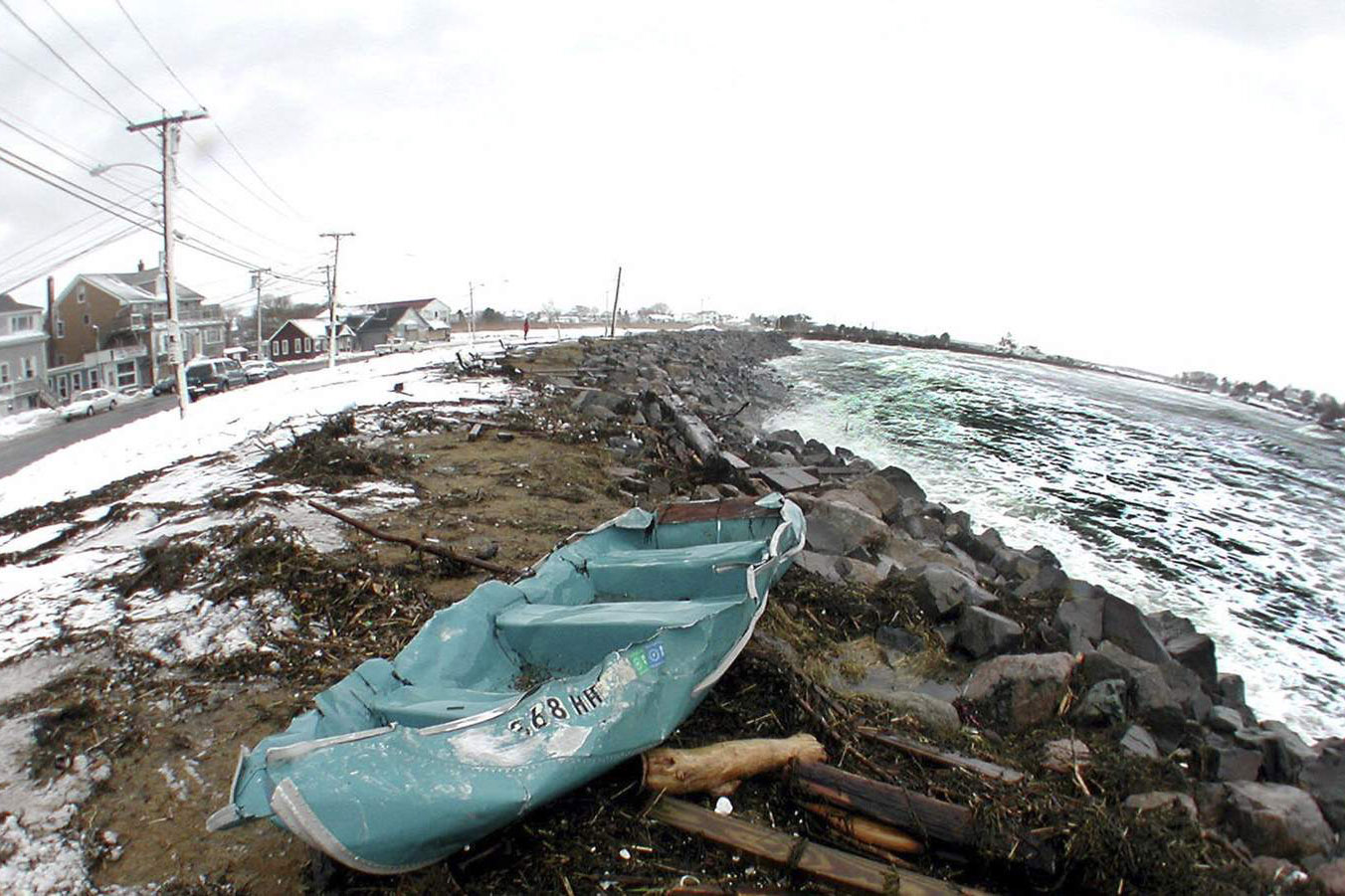NOTE: This Story Was Originally Published August 19, 2016
Nahant, Massachusetts is a rocky, crescent moon-shaped piece of land that juts out into the Atlantic Ocean just north of Boston. For its entire history, it’s been at the mercy of the ocean.
To get to the town, back in the 1800s, you would cross a long beautiful beach at low tide that connected Nahant to the mainland. At high-tide, you had to take a boat. These days, there’s a four-lane road built on that beach, and it sits just a few feet above high tide.
“When the weather’s good in the summer, there’s no prettier, nicer place,” says Dave Lazzaro, a retired bartender and wood worker, as he sat in his living room on a windy day in spring. “We have a private beach, we have a great view. The shipping lanes of Boston come right in front of our house, so all the big ships that come in, we can see. And I love it. I love my house.”
LISTEN: The Home by the Shore
The house he shares with his wife Chris is full of his carvings. It’s kind of a comforting nautical clutter. They have lived on Willow Road, in a house that at high tide is a stone’s throw from the water, for nearly 50 years.
“I raised a family here,” he says, matter-of-factly.
Waterfront property tends to be expensive. More than 120 million people live in coastal counties in the United States. That’s more than a third of the country. But most people living by the water know you get the beautiful summer days, but also the brutal storms. There are two storms that people who have lived in Nahant for a long time talk about: the Blizzard of 1978, and what everyone here calls the “No-Name Storm” in 1991. If you live anywhere else, you’ve probably heard that second one called the Perfect Storm. They made a movie about it.
“When a storm comes in, the house shakes. You can literally feel it. And when those big waves hit the seawall, you can see movement, see curtains moving,” Lazzaro says. “In the blizzard of ‘78, I had put plywood up over the windows. But when that got knocked in, there were waves carrying four-by-eight sheets of plywood through the living room.”
He says if one of those had hit him or his wife, it could have broken bones or dragged them underwater.
As the seas rise, climate scientists predict devastation will become more and more common. Higher seas mean even a less powerful storm could push the tides up over Nahant’s seawalls. Around the country, as many as 12 million people could be at risk because of sea level rise.
“The unfortunate thing is what we’re really facing in so many of these coastal areas is what we can rightly call an extinction threat,” said Sam Merrill, an engineer with GEI Consultants, an engineering firm that designs coastal infrastructure. “The extinction of a community. We don’t know how to deal with extinction. It’s not really a conversation in our public sphere.”
Continue reading this story at WBEZ »
###
This story was produced by WBEZ, Chicago’s NPR news station. And be sure to check out more stories in WBEZ’s “Heat of the Moment” series, which explores the impacts of climate change on our everyday lives. Support for “Heat of the Moment” is provided by The Joyce Foundation, which works to improve quality of life, promote community vitality and achieve a fair society.

